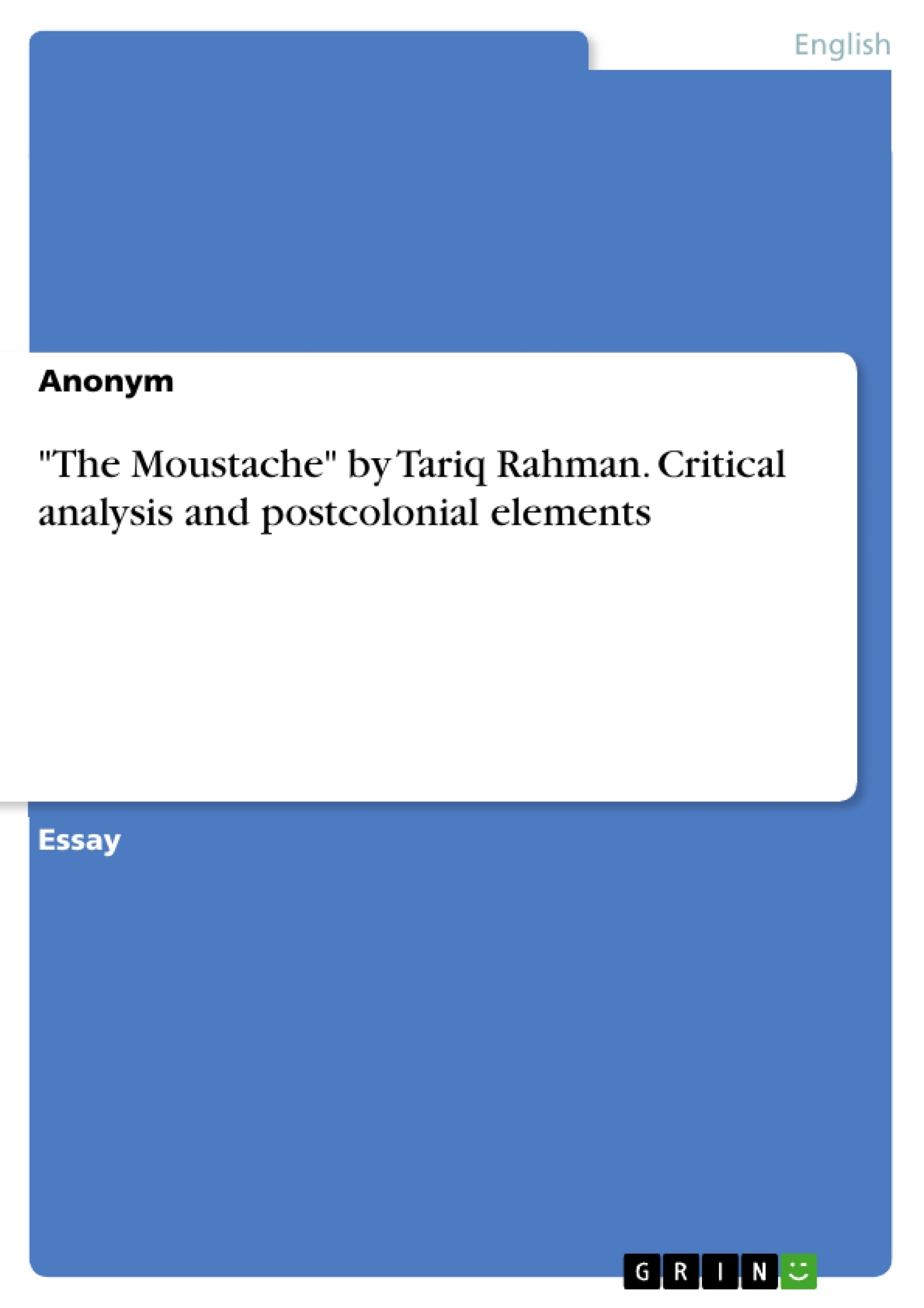The Moustache" by Tariq Rahman offers an insightful perspective on the post-colonial context with a particular focus on the transformation of traditional values and power dynamics in the wake of colonial influence. This story captures the broader post-colonial discourse, where the interplay between cultural traditions, shifting power structures, and the clash of rural and urban values have been overserved. "The Moustache" is a captivating story about the long-standing tradition of growing moustaches in Punjab, a tradition that signifies a man's masculinity. Moustaches are a common concept, but Tariq Rahman's approach makes it even more interesting, mixing elements of tragedy and humor.
Table of Contents
- Introduction
- Critical Analysis
- The Significance of Moustaches
- The Clash of Rural and Urban Values
- Irony in Appearance and Disillusionment
- Post-Colonial Element
- Continuation of Colonial Hierarchy
- Impact of Colonialism on Land Ownership
- Transition from Landowners to Laborers
- The Deeper Message
Objectives and Key Themes
The story "The Moustache" by Tariq Rahman aims to provide a nuanced perspective on the post-colonial context, specifically examining the transformation of traditional values and power dynamics following colonial influence. It also explores the clash between rural and urban values in a post-colonial setting.
- The significance of traditional symbols like moustaches in defining identity and honour.
- The impact of colonial legacies on land ownership, social hierarchy, and economic structures.
- The clash between rural and urban values, particularly in the context of modernity and traditional customs.
- The role of irony in highlighting the complexities of societal change and the consequences of clinging to outdated traditions.
- The importance of understanding the deeper meaning of pride and honour beyond superficial appearances and traditional customs.
Chapter Summaries
The story begins by introducing the narrator's family and their strong attachment to moustaches as symbols of pride and honour. The family's decline and move to another village initially diminished the focus on moustaches. However, the narrator's cousin, Allah Dad, growing a moustache at the age of twenty-two, brought happiness and a renewed sense of pride to the family. Dadu's moustache becomes a point of contention, especially with a clean-shaven uncle named Jaggu, who predicts its downfall. The situation escalates when Dadu is brutally beaten, and his moustache is forcibly removed by strangers, leaving him traumatized and mute. This event marks a turning point, leaving the narrator and his family deeply affected by the loss of honour and the perceived weakness of Dadu. Despite this tragedy, Dadu becomes a mythical figure in the village, admired for his supposed strength. The narrator ensures that his son, Shafqat, holds onto the heroic image of Dadu. However, Shafqat, upon returning home after serving in the army with an impressive moustache, is found working as a subordinate with a barely visible moustache, contrasting with the image of the legendary Dadu. This realization leaves the family disappointed, as their expectations of pride and honour are not met.
Keywords
The story explores themes of tradition, post-colonialism, identity, honor, masculinity, rural and urban values, irony, and the impact of colonial legacies on society. Key concepts include the significance of moustaches as symbols of traditional values, the clash between rural and urban settings, the continuation of colonial hierarchy in post-colonial societies, and the importance of understanding the deeper meaning of pride and honour beyond superficial appearances.
- Quote paper
- Anonym (Author), 2023, "The Moustache" by Tariq Rahman. Critical analysis and postcolonial elements, Munich, GRIN Verlag, https://www.hausarbeiten.de/document/1442621


